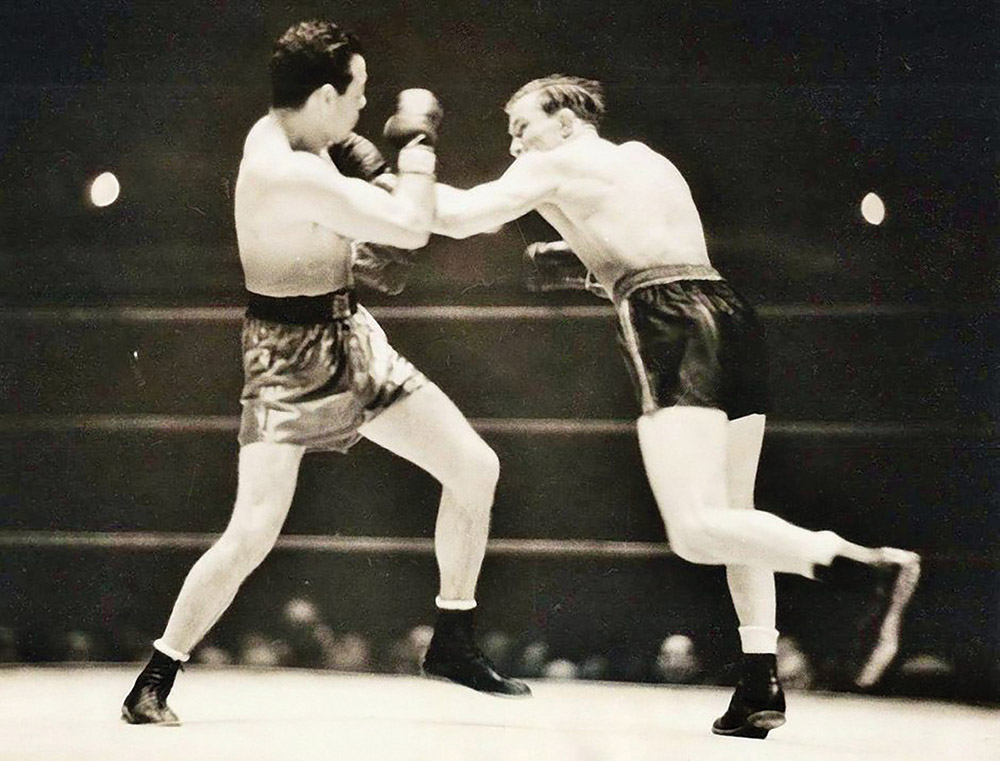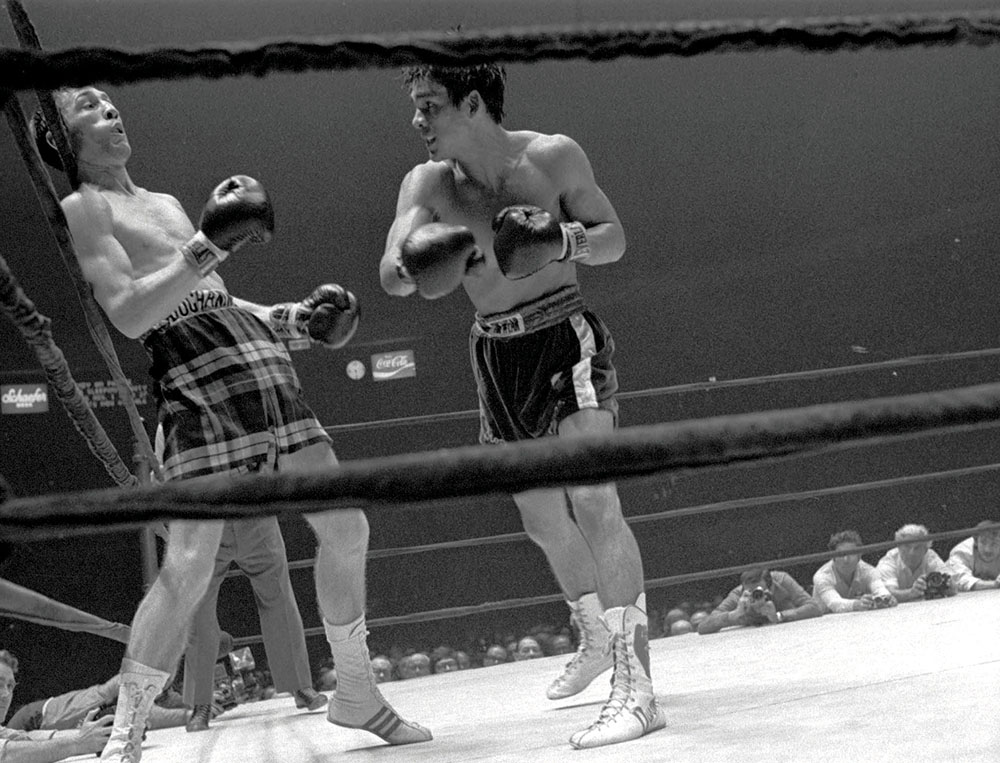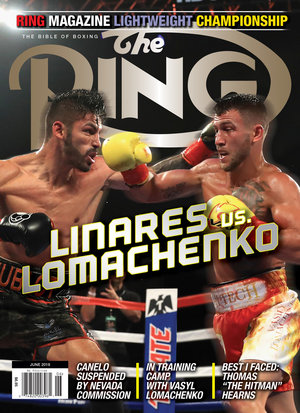Jorge Linares-Vasyl Lomachenko – Garden of lightweight delights
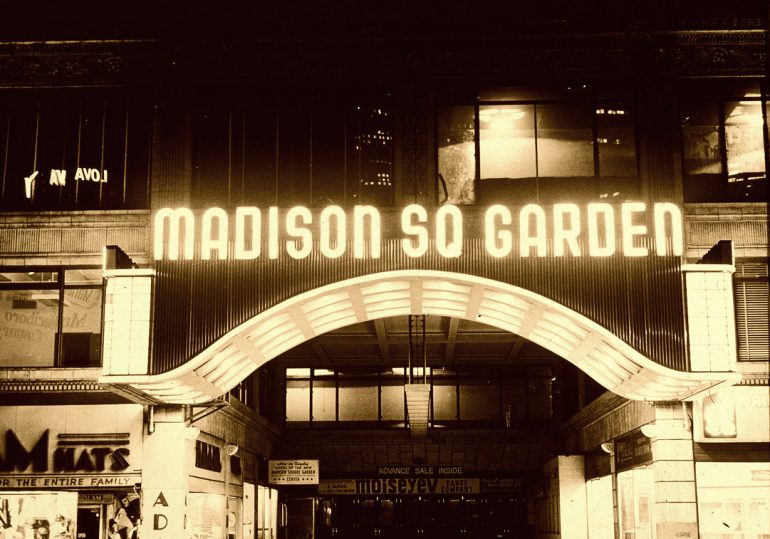
Note: This feature originally appeared in the June 2018 issue of THE RING Magazine.
LINARES-LOMACHENKO IS AN OVERDUE ADDITION TO MADISON SQUARE GARDEN’S LEGACY OF 135-POUND TITLE FIGHTS
Though the physical location of Madison Square Garden has changed several times since the first of four incarnations opened in 1879, the spiritual meaning behind “The Mecca of Boxing” has remained constant: The best fighting the best in the greatest media market on planet Earth. The four MSGs have hosted hundreds of title fights, but the May 12 lightweight showdown between RING/WBA champion Jorge Linares and WBO junior lightweight king Vasyl Lomachenko represents an increasing rarity. That’s because Linares-Lomachenko will be the first 135-pound title fight at The Garden since then-WBA beltholder Brandon Rios stopped John Murray in December 2011 and only the third 135-pound title fight staged there in the 21st century (Joel Casamayor-Jose Armando Santa Cruz in November 2007 being the other).
The following article will relive 10 notable lightweight championship fights from MSG’s past, not just to illustrate the building’s glorious past but also to demonstrate the level to which Linares-Lomachenko must rise to merit comparison.
January 14, 1921 – Benny Leonard TKO 6 Richie Mitchell II:
One could say this was boxing’s equivalent of a home-and-home series. Nearly four years earlier, Leonard stopped Mitchell in seven rounds before the aspirant’s hometown fans in Milwaukee while the rematch was staged on “The Ghetto Wizard’s” home turf of New York City. The first round of fight two remains among the best curtain-raisers in championship history. After Leonard dropped Mitchell three times in the first two minutes, the desperate challenger, to the shock of everyone, suddenly floored the arm-weary champion with his lethal left hook. Initially glassy-eyed, Leonard refocused, stood his ground and motioned Mitchell to come at him. Sensing a trap, Mitchell slowed his attack enough to allow Leonard to last the round. From there, a fully recovered Leonard outboxed Mitchell, flooring him four more times before the fight was stopped in the sixth. In beating Mitchell, Leonard once again proved that a fighter can win as much with his brain and with his guts as he can with his fists.
May 10, 1935 – Tony Canzoneri UD 15 Lou Ambers I:
After Barney Ross vacated the lightweight title to pursue the 140-pound belt, Canzoneri and Ambers were paired to fill the void. The 21-year-old Ambers, who entered the fight with a 45-1-5 (15 KOs) record thanks to a bustling style that inspired his “Herkimer Hurricane” nickname, was a 13-to-5 favorite over Canzoneri, who, at 26, was taking part in the 135th fight of his 14-year career. Before a packed house of approximately 20,000, Canzoneri fought like the young man he was chronologically instead of the prematurely aging boxer his long years in the ring had made him. Time and again, Canzoneri snapped the circling Ambers’ head back with beautifully timed jabs, skillfully avoided the younger man’s counters and scored the fight’s first knockdown with a rifle-shot right in the third. Canzoneri continued to pile up the points, though he did lose one of them in the 10th due to low blows. He capped a brilliant performance by decking Ambers a second time with a right to the ear in the 15th.
September 3, 1936 – Lou Ambers UD 15 Tony Canzoneri II:
The 15-plus months between fights did a world of good for Ambers, as he won his next 14 over the likes of Fritzie Zivic, Frankie Klick and Baby Arizmendi, all of whom he outpointed over 10 rounds. During the same span, Canzoneri won 11 straight, with his victims including Klick (twice), Johnny Jadick and Jimmy McLarnin in non-title affairs, and Al Roth over 15 rounds in his only title fight (which was staged at MSG). But, as was the case before the first fight, Canzoneri wasn’t sure if his legs had the same spring. In May 1935, they did and he won. In September 1936, Ambers, hungry for revenge, took those legs away with constant pressure and an inspired attack that left Canzoneri’s face cut and swollen. Like the first fight, the decision was unanimous, but this time it was Ambers who won convincingly, winning 12 rounds on one card, 10 on another and nine on the third. With the score tied at one fight apiece, a rubber match was a virtual certainty.
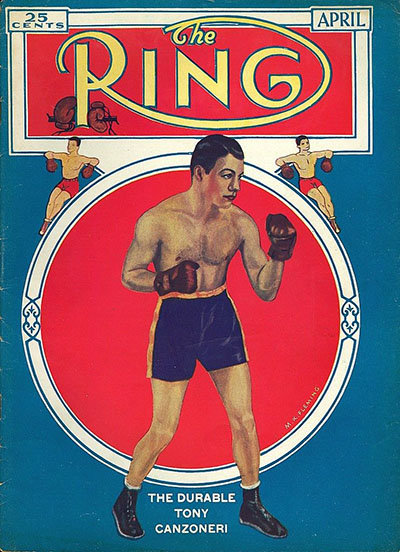 May 7, 1937 – Lou Ambers UD 15 Tony Canzoneri III:
May 7, 1937 – Lou Ambers UD 15 Tony Canzoneri III:
Fifty-five days after conquering Canzoneri, Ambers lost a split decision against Eddie Cool. Then, 23 days later, he dropped a unanimous decision to McLarnin. In fact, in the 10 fights between the second and third Canzoneri fights – all of which were non-title affairs – Ambers went a modest 6-3-1 while Canzoneri fought just four times, winning three and losing on points to McLarnin a month after the Ambers rematch. But as is the case with ambitious young champions, they find a way to regain their groove when the title is on the line. The confident Ambers, building on what he learned in fight two, administered a severe beating that cut the bridge of Canzoneri’s nose and closed one of the former champion’s eyes. Referee Arthur Donovan scored the fight 12-2-1 for Ambers while judges Charley Lynch and Eddie Forbes turned in scorecards of 13-2 and 15-0 respectively. It would be the final championship fight of Canzoneri’s career, but Ambers, still just 23, was poised for even bigger and better things.
August 17, 1938 – Henry Armstrong SD 15 Lou Ambers I:
Ambers went 9-0-1 after completing the title trilogy with Canzoneri, and, in doing so, he reversed a previous non-title decision loss to Pedro Montanez by outpointing him with the title on the line. In fact, Ambers-Montanez was part of Mike Jacobs’ “Carnival of Champions,” which saw four world title fights on the same card at New York’s Polo Grounds. Back at The Garden, Ambers was facing Armstrong, the featherweight champion who, in his most recent fight, had defeated Barney Ross to add the welterweight title and to extend his winning streak to 38. Scaling 134 – a half-pound more than against Ross – Armstrong set a pace even the bustling Ambers couldn’t match, and he maintained that pace from first bell to last. The only reason the decision was split was because referee Billy Cavanaugh took four rounds away from Armstrong for committing infractions. Still, the win enabled Armstrong to become the first – and only – fighter ever to hold major titles in three weight classes simultaneously. They fought again at Yankee Stadium a year later, and while Ambers regained the title to stop Armstrong’s streak at 46, point deductions played a pivotal role as referee Arthur Donovan deducted five rounds from Armstrong, just enough to push Ambers over the finish line and win by split decision.
November 28, 1966 – Carlos Ortiz KO 14 Gabriel “Flash” Elorde:
This was a rematch of their 1964 lightweight title fight staged in 130-pound titleholder Elorde’s native Philippines, a contest that saw Elorde hang tough for 10 rounds before a surge by Ortiz led to the fight being stopped in Round 14. Since then, Ortiz had lost his two belts to Ismael Laguna, then regained them from him seven months later and registered two more defenses, the last of which was a chaotic fifth-round TKO against Ultiminio “Sugar” Ramos. The WBC withheld its sanction of the Elorde rematch until Ortiz granted Ramos a rematch (which he eventually did). Meanwhile, Elorde continued to yo-yo between 130 and 135, retaining the lighter belt four times but losing his OPBF lightweight title to Yoshiaki Numata. Though only a half-pound heavier than Elorde, the 135-pound Ortiz looked thicker and larger, and he used that strength along with his spearing blows to force Elorde to retreat. A hook to the body and an uppercut to the jaw visibly weakened Elorde in the 14th, after which a volley of blows capped by a vicious left uppercut left Elorde flat on his back. He remained there for the full 10-count – and for some time after – until he eventually regained his senses.
September 13, 1971 – Ken Buchanan UD 15 Ismael Laguna II:
Nearly a year earlier, Buchanan had dethroned Laguna by split decision in Puerto Rico under tortuous triple-digit heat and through eyes that were nearly slammed shut. While heat was removed as a factor in the rematch thanks to it being staged at MSG, Buchanan’s struggles with facial injuries remained. A lump under the left eye sprouted near the end of Round 3 (Buchanan said in his autobiography that it was caused by a thumb), and that lump broke open early in the fifth – a result, Buchanan said, of chief second Eddie Thomas’ work with a razor between rounds to ease the pressure and Laguna’s subsequent punches. Worse yet, the eye eventually swelled nearly shut, after which a severe cut over the orb was opened late in the 12th. Through it all, the gritty Buchanan dug deep, landed the stronger punches and battered the tiring Panamanian in the home stretch to secure a hard-fought and deserved points win (10-5, 9-6, 8-6-1).
June 26, 1972 – Roberto Duran TKO 13 Ken Buchanan:
On the undercard of Buchanan-Laguna II, Duran, a 20-year-old countryman of Laguna’s, scored an electrifying 66-second knockout of Benny Huertas that raised plenty of eyebrows. Now, nine months later, Duran was fighting Buchanan for the lightweight championship, and, in the fight’s opening seconds, he landed an overhand right that caused Buchanan to touch both gloves on the canvas. From there, the challenger unleashed a savage and unceasing attack, but the champion, a 2-to-1 favorite, fought back with his customary skill and grit, at times getting the better of the action. The bout’s final moments remain controversial; slightly after the bell ending Round 13, Duran landed a right well below the belt that left Buchanan writhing in pain. Though Buchanan wanted to continue, he wasn’t allowed to come out for the 14th. Referee Johnny LoBianco awarded the fight – and the title – to Duran, saying the final blow landed on the solar plexus. Later, after viewing a TV replay, LoBianco admitted Duran had landed low, but the result still stood.
September 15, 1983 – Ray Mancini KO 9 Orlando Romero:
The first WBA lightweight title fight since Duran-Buchanan pitted the champion Mancini, a bull-strong power-hitter who often threw more than 100 punches per round, and challenger Romero, a Peruvian southpaw who sported a 30-0-1 (12 KOs) record, the No. 1 WBA rating and, because he had never previously fought outside Peru, the power of the unknown. The early action told Mancini everything he needed to know: Romero was nimble, quick-handed, strong enough to hang with “Boom Boom” in the trenches and good enough to land left crosses with impressive frequency. Entering the ninth, Romero trailed narrowly on two cards (79-77, 77-76) and was even on the third (77-77), but any thoughts of an upset were emphatically erased after Mancini landed a lightning-quick hook to the jaw that left the South American on his back. Romero, with blood masking his face, tried to rise, but by the count of 10 he had only rolled onto his knees.
June 13, 1986 – Hector Camacho SD 12 Edwin Rosario:
Camacho had spent a good portion of his boxing life fighting in New York City, but because he was making the first defense of the WBC lightweight championship he won from Jose Luis Ramirez, “The Macho Man” was taking part in his first title contest at The Garden. Rosario had won four straight since losing that same WBC belt to Jose Luis Ramirez 19 months earlier. But Camacho was viewed as a significant favorite, based on his dazzling performance against Ramirez and the perception that Rosario (even at age 23) was shopworn. After falling behind early, Rosario opened a cut over Camacho’s left eye in the fourth (the first cut of Camacho’s career). Then, 44 seconds into the fifth, he nailed Camacho with a massive counter hook to the jaw that turned the champ’s legs to rubber. The resourceful Camacho managed to survive Rosario’s follow-up assault, then avoided serious trouble for the next five rounds, thanks to his constant motion and frequent jabbing. With less than a minute remaining in the 11th, Rosario staggered Camacho with a right to the jaw, and the retreating Camacho again escaped disaster and made it back to his stool. Rosario did his best to get the knockout in the 12th, but Camacho’s spoiling tactics helped him put the fight in the judges’ hands. Luis Rivera, who scored the fifth and 11th rounds 10-8 for Rosario, voted 114-113 for the former champ. But he was overruled by Tony Castellano and Stuart Kirshenbaum, both of whom voted 115-113 for the winner. The drama surrounding this fight, the controversial scoring and – three months later, Rosario’s shocking KO of WBA titlist Livingstone Bramble on the undercard of Camacho’s points win over Cornelius Boza-Edwards – made Camacho-Rosario II the hottest rematch that could be made. Unfortunately, it was never to be.
This feature originally appeared in the June 2018 issue of THE RING Magazine
Struggling to locate a copy of THE RING Magazine? Try here or
Subscribe
You can order the current issue, which is on newsstands, or back issues from our subscribe page.


